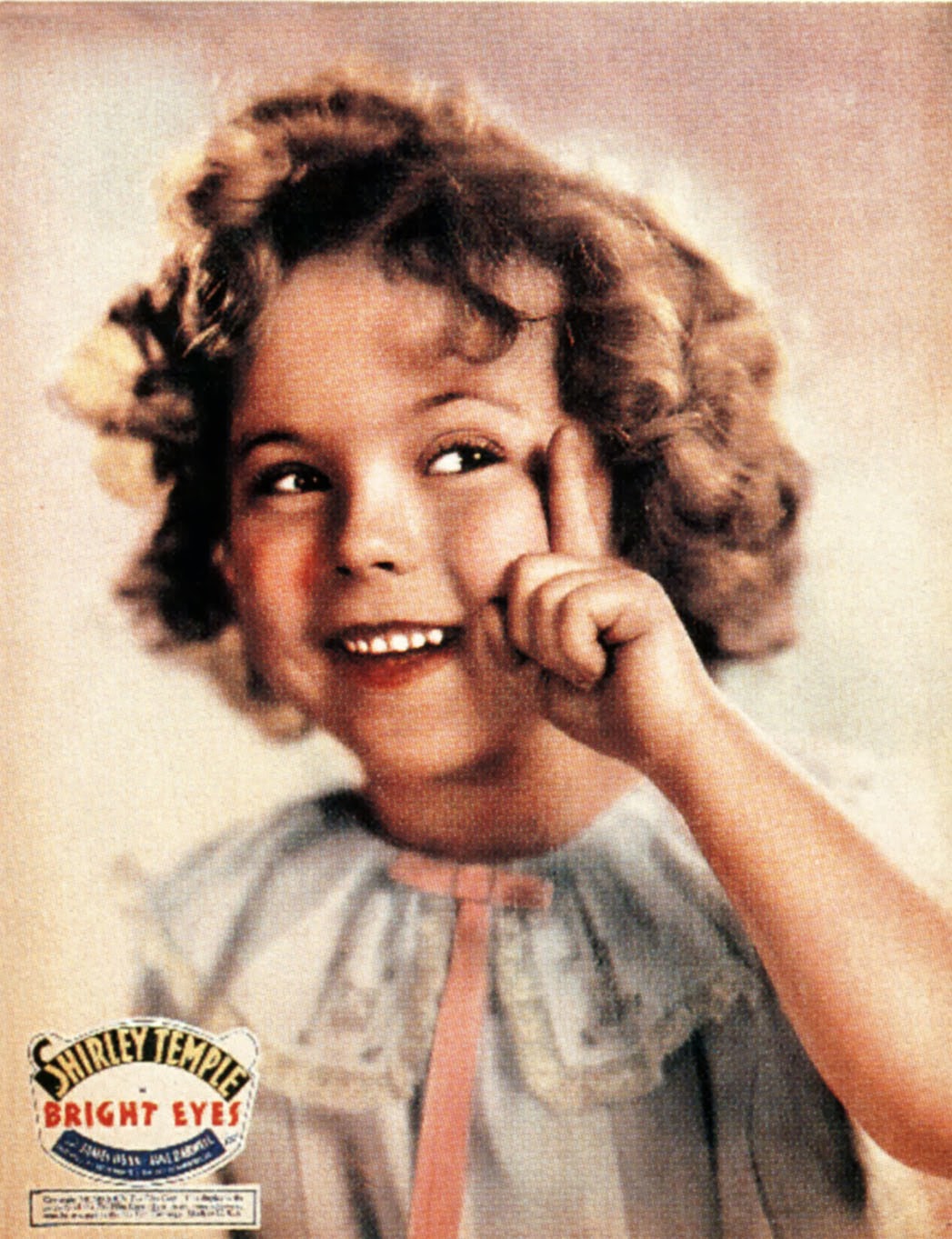Stand Up and Cheer! (1934)
Temple made her feature debut in Hamilton McFadden's musical Stand Up and Cheer! She only had a small part in that movie -- the plot sees the U.S. government creating a "Department of Amusement" to shake the nation from its Depression doldrums -- but the picture quickly made Fox realize what a valuable asset it had on its hands and went on to save the studio from bankruptcy.
Bright Eyes (1934)
Temple captivated moviegoers with her furrowed brow, perplexed pouts and unrelenting cheeriness in Bright Eyes, the David Butler-directed picture in which she played an orphaned godchild caught in a custody battle. She memorably belted out her signature song, "The Good Ship Lollipop," and the sheet music then sold a half-million copies.

Oscar Winner (1935)
The Academy of Motion Picture Arts and Sciences presented Temple at age 6 with the first Juvenile Academy Award "in grateful recognition of her outstanding contribution to screen entertainment during the year 1934." She is the youngest person ever to receive an Oscar statuette, miniature or otherwise.
Curly Top (1935)
In the musical directed by Irving Cummings, Temple plays a sweet but trouble-making orphan adopted by a wealthy bachelor, who then falls for her older sister. It is in Curly Top that Temple sings her classic, "Animal Crackers in My Soup."
The Little Colonel (1935)
Once again directed by David Butler, The Little Colonel is the Civil War musical drama in which Temple tap-danced with Bill "Bojangles" Robinson on a staircase in one of the most enchanting cinematic sequences of all time. In her first of four onscreen pairings with Robinson, Temple plays Lloyd Sherman, the estranged granddaughter of Colonel Lloyd -- though the two bond as the rest of their family reconciles.
Heidi (1937)
Directed by Allan Dwan, Heidi is the big-screen adaptation of Swiss author Johanna Spyri's children's tale. The hit cast Temple as the title character, who is taken from her grandfather to befriend a bratty invalid.
An Oscar for Walt Disney (1939)
Temple, the top child star at the time, was chosen to present Walt Disney with a special honorary award for Snow White and the Seven Dwarfs. She memorably handed him a full-sized Oscar statuette, with seven miniature Oscar statuettes descending in a row.
A Little Princess (1939)
In the film loosely based on the Frances Hodgson Burnett tale, Temple reprises another orphan character, this time as a boarding school student who is mistreated when her father is lost at war. Directed by Walter Lang, it was the first of her movies to be filmed completely in Technicolor.
Adventure in Baltimore (1949)
Temple married John Agar (seven years her senior) in 1945 when she was 17, in a Los Angeles wedding that attracted thousands of her fans. They had a daughter, Linda, and Agar became an actor, appearing with Temple in Richard Wallace's Adventure in Baltimore. But troubled by his excessive drinking and constant flirtations, Temple filed for divorce in 1949 and retired from acting. She then wed Charles Black in 1950; they had a son, Charles, in 1952 and a daughter, Lori, in 1954.
Temple Hits TV
Temple's last professional affiliation with show business was in the late 1950s and early '60s, when she hosted and sometimes starred in Shirley Temple's Storybook and The Shirley Temple Show on television. She then went on to try a run for Congress and act as a U.S. delegate to the United Nations, a U.S. ambassador to Ghana and Czechoslovakia and as the State Department's chief of protocol. She also published her best-selling autobiography, Child Star, and received Kennedy Center honors and the Screen Actors Guild's Life Achievement Award.
This article originally published at The Hollywood Reporter
Related Articles:









No comments:
Post a Comment